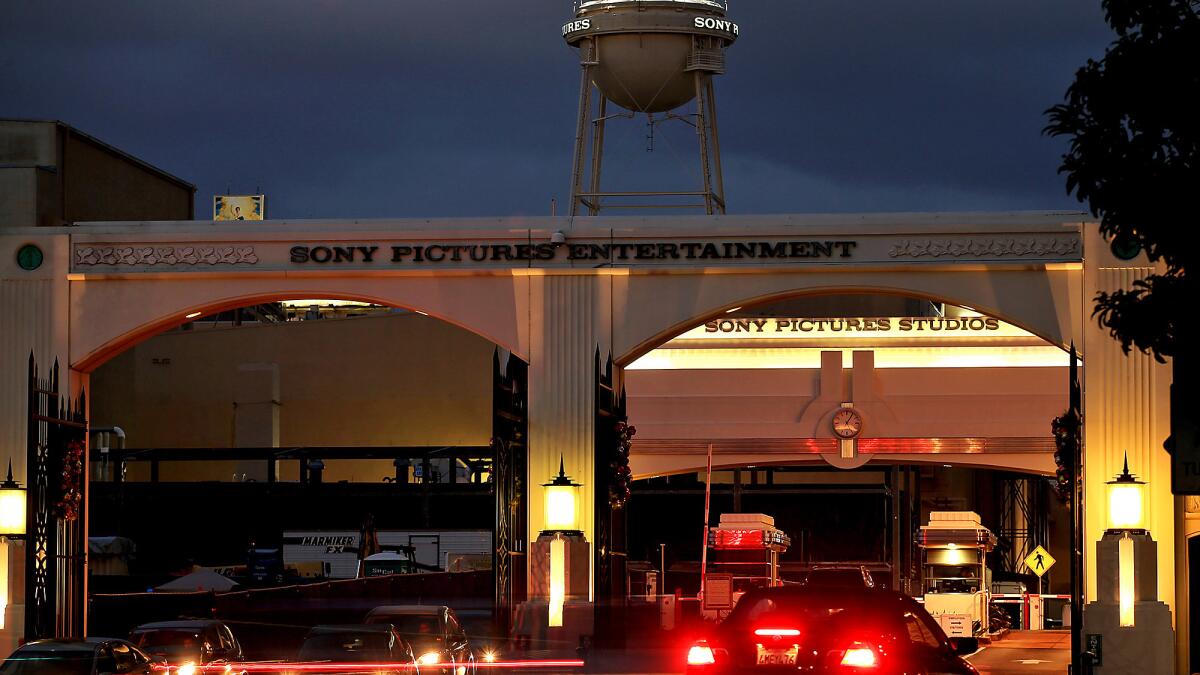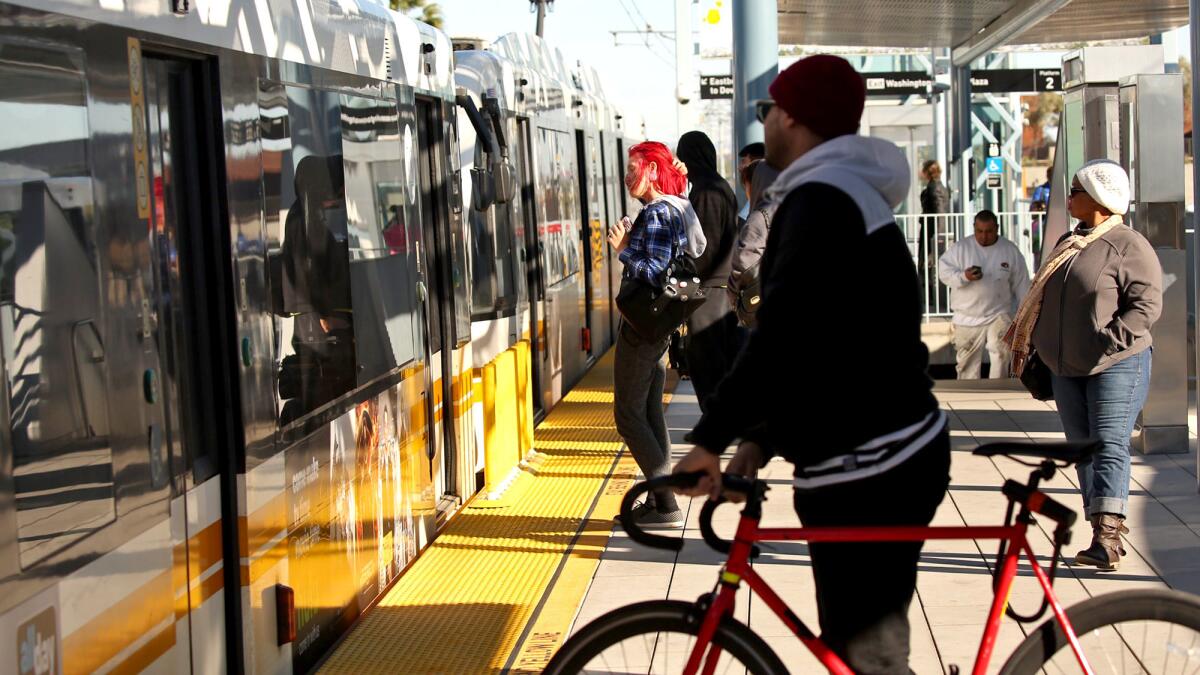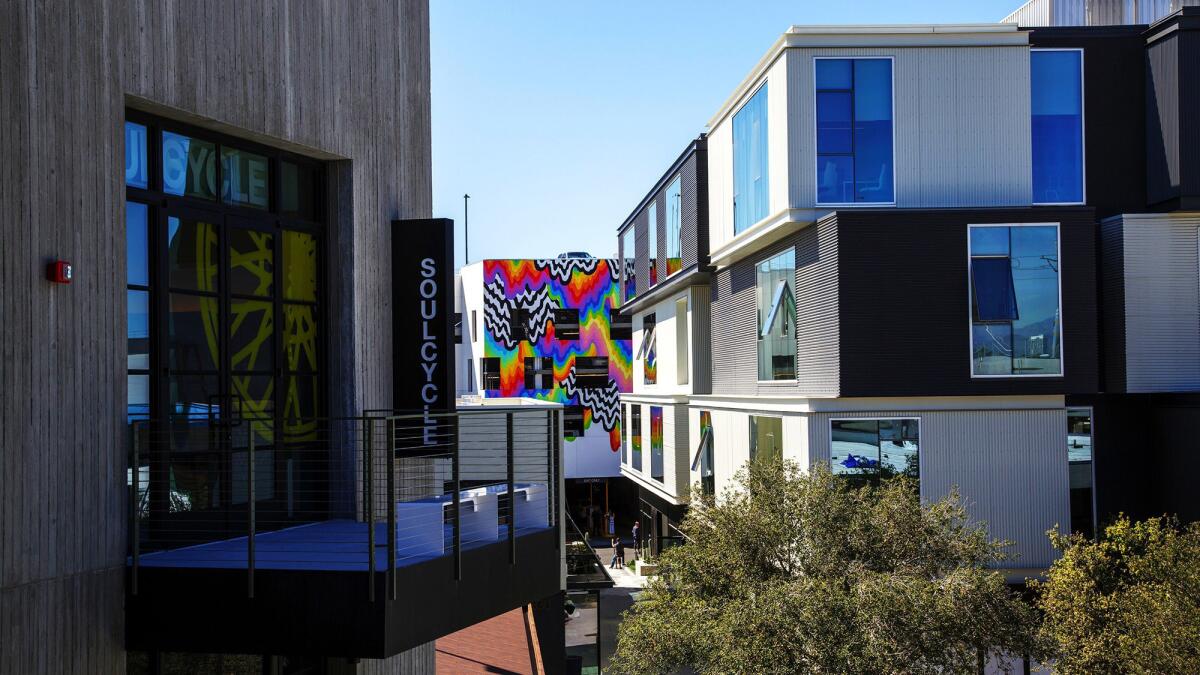Neighborhood Spotlight: Culver City is re-energized and adding to its resume

- Share via
The city that became known as “The Heart of Screenland” sprang up from farmland along the Pacific Electric Railway line to Venice and was incorporated by its founder and namesake, Harry Culver, in 1917.
Even before Culver City was officially a city, the movies had come to town, with Thomas Ince moving his studios from Pacific Palisades and building the two production facilities that would become MGM Studios (and later, Sony Pictures Studios) and the Culver Studios.
While Hollywood the place got all the press, Hollywood the industry in its Golden Age was centered in Culver City. “Gone With the Wind,” “The Wizard of Oz,” and “Citizen Kane” were some of the towering achievements of cinema that rolled off the studio production lines on Washington Boulevard.
See the most-read in Life & Style this hour »
Street upon street of neat little bungalows were built to house the army of production personnel required, and the tidy all-American neighborhoods of Culver City themselves became screen stars, providing the backdrop to movies and television shows set in cities and towns all around the country.

The movies weren’t the only marquee name in town: Howard Hughes built his aerospace empire on land just outside the city limits and ran RKO Pictures (now known as Culver Studios) for seven turbulent years in the late 1940s and early 1950s.
Culver City suffered through a period of decline beginning in the 1960s, but the return of production to the old MGM lot after Sony’s purchase of Columbia Pictures reinvigorated the economy. A savvy and effective renewal scheme saw the city’s downtown become a pedestrian-friendly dining spot, and the area around the Helms Bakery become a center for the arts and furniture shops.
The opening of the Expo Line in 2012 brought rail transit back to the city. There are new apartments under construction nearby, and the mixed-use shopping and office center the Platform recently opened near the site of the old Hal Roach Studios.
Neighborhood highlights

L.A. tech: Media is still king in Culver City, but hot start-ups including Criteo, MeUndies, and Steelhouse all make their homes in town, and as rents in nearby Playa Vista and Venice continue to climb, more are likely to follow.
Comfort. Speed. Safety: It’s not quite the return of the Red Cars, but the old Pacific Electric Railway motto applies just as well to the Expo Line, which puts the downtowns of L.A. and Santa Monica a 20-minute train ride away.
Stunning photos, celebrity homes: Get the free weekly Hot Property newsletter »
Small town, big-city living: It’s hard to find a more consistently vibrant corridor on the Westside than Washington Boulevard in Culver City. From Coolhaus on the east end to A-Frame on the west, there are plenty of dining options — and don’t forget drinks at the Culver Hotel in the heart of downtown.
Neighborhood challenges
A tight market: There are a few small-lot subdivisions under construction, but demand is high and inventory low. The hundreds of apartments that will be coming online in the next few years might take some of the pressure off, but for now, expect a tough buyer’s market.
Homeowner insight

Nada Kabbani, 42, purchased a newly built three-bedroom, four-bathroom home in Culver City in January, moving from Westwood.
“I work in Silicon Beach, and it’s only a 12-minute commute without freeways,” said Kabbani, a director at a global advertising agency. “What I love about it is it’s so diverse, with up-and coming restaurants and bars and a nice night scene and wonderful school districts, but at the same time it’s very real: It’s real people, and broad in terms of culture and ethnicities, which attracted me a lot.”
Market snapshot
Portions of the 90016, 90066, 90230 and 90232 overlap the Culver City area.
In the 90016 ZIP Code, based on 17 sales, the median sale price for single-family homes in April was $620,000, according to CoreLogic. The median price for the 90066 ZIP was $1.24 million based on 36 sales; in the 90230, the median price was $900,000 based on 15 sales; and in the 90232, 12 sales resulted in a median price of $1.26 million.
Report card
Within the city boundaries is El Marino Elementary, which scored 944 out of 1,000 in the 2013 Academic Performance Index. Farragut Elementary was another bright spot, with a score of 943.
Linwood E. Howe Elementary had a score of 867, Culver City Middle scored 858, and La Ballona and El Rincon elementaries each scored 853. Culver City High had a score of 832, and Grand View Boulevard Elementary scored 804. Culver Park High came in at 578.
MORE FROM HOT PROPERTY
The virtual open house is available 24/7
Scenic Echo Park embraces a tradition of change
Orange County’s most expensive homes have presidential pedigree, ocean views
More to Read
Sign up for Essential California
The most important California stories and recommendations in your inbox every morning.
You may occasionally receive promotional content from the Los Angeles Times.






